
The Great Train Robbery is a 1903 American silent film made by Edwin S. Porter for the Edison Manufacturing Company. It follows a gang of outlaws who hold up and rob a steam train at a station in the American West, flee across mountainous terrain, and are finally defeated by a posse of locals. The short film draws on many sources, including a robust existing tradition of Western films, recent European innovations in film technique, the play of the same name by Scott Marble, the popularity of train-themed films, and possibly real-life incidents involving outlaws such as Butch Cassidy.

Virgil Walter Earp was an American lawman. He was both deputy U.S. Marshal and City Marshal of Tombstone, Arizona, when he led his younger brothers Wyatt and Morgan, and Doc Holliday, in a confrontation with outlaw Cowboys at the Gunfight at the O.K. Corral on October 26, 1881. They killed brothers Tom and Frank McLaury and Billy Clanton. All three Earp brothers had been the target of repeated death threats made by the Cowboys who were upset by the Earps' interference in their illegal activities. All four lawmen were charged with murder by Ike Clanton, who had run from the gunfight. During a month-long preliminary hearing, Judge Wells Spicer exonerated the men, concluding they had been performing their duty.
The Western River Expedition (WRE) was a Disney theme park attraction that was designed but never built. It was to be a western themed boat ride, slated to appear in the northwestern section of Frontierland at the Magic Kingdom, a theme park at the Walt Disney World Resort in Lake Buena Vista, Florida, United States.
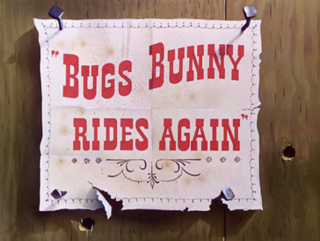
Bugs Bunny Rides Again is a 1948 Merrie Melodies animated short directed by Friz Freleng. The short was released on June 12, 1948, and stars Bugs Bunny and Yosemite Sam.

Pete Spence was a small-time criminal known for his association with outlaw Cowboys Frank and Tom McLaury, and Ike and Billy Clanton, of Tombstone, Arizona Territory. Spence was also a suspect in the assassination of Morgan Earp. His wife Marietta Duarte testified that Spence and several friends had talked about killing Morgan, but the judge ruled her testimony inadmissible. Spence was first suspected of robbery in 1878 in Goliad County, Texas. He was suspected of stealing mules and later a suspect in a stagecoach robbery outside Bisbee, Arizona. While a deputy sheriff, he pistol-whipped and killed a man for which he served 18 months of a five-year term before the governor pardoned him.
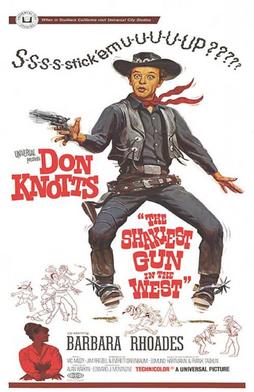
The Shakiest Gun in the West is a 1968 American comedy Western film starring Don Knotts. It was directed by Alan Rafkin and written by Jim Fritzell and Everett Greenbaum. The film is a remake of The Paleface, a 1948 film starring Bob Hope and Jane Russell.

Hot Lead and Cold Feet is a 1978 American comedy-Western film produced by Walt Disney Productions and starring Jim Dale, Karen Valentine, Don Knotts, Jack Elam and Darren McGavin.

Frank C. Stilwell was an outlaw Cowboy who killed at least two men in Cochise County during 1877–82. Both killings were considered to have been self-defense. For four months he was a deputy sheriff in Tombstone, Arizona Territory for Cochise County Sheriff Johnny Behan. Stilwell owned interests in several mines and various businesses, including a saloon, a wholesale liquor business, a stage line, and at his death livery stables in Charleston and Bisbee. He was also a partner in a Bisbee-area saloon with ex-Texas Ranger Pete Spence.

Montana Moon is a 1930 pre-Code Western musical film which introduced the concept of the singing cowboy to the screen. Starring Joan Crawford, Johnny Mack Brown, Dorothy Sebastian, and Ricardo Cortez, the film focuses on the budding relationship between a city girl and a rural cowboy.
Charles "Pony Diehl" Ray was an Old West outlaw in the New Mexico Territory and Arizona Territory. He was accused by Wyatt Earp of having taken part in an attempt to kill his brother, Virgil Earp. Diehl was not tried due to a lack of evidence.
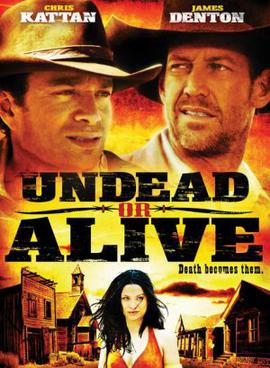
Undead or Alive: A Zombedy is a 2007 Western comedy horror film directed by Glasgow Phillips, written by Phillips and Scott Pourroy, and starring Navi Rawat, Chris Kattan and James Denton. The film was later acquired by Image Entertainment, a deal that included both theatrical and home video rights.
![<i>Man of the East</i> 1972 [[Cinema of Italy|Italy]] film](https://upload.wikimedia.org/wikipedia/en/2/2d/Man_of_the_east.jpg)
Man of the East is a 1972 Italian Spaghetti Western film directed by Enzo Barboni starring Terence Hill.
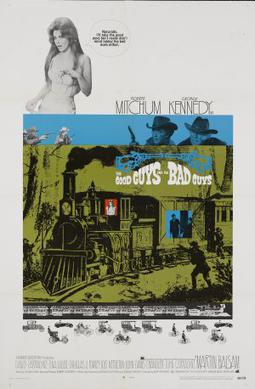
The Good Guys and the Bad Guys is a 1969 American comedy Western film directed by Burt Kennedy. It stars Robert Mitchum and George Kennedy.
The Little Train Robbery is a 1905 American silent Western film directed by Edwin S. Porter. It is a parodic sequel/remake to Porter's 1903 film The Great Train Robbery with an all-child "cast as the robbers, and a miniature railroad and playhouse as sets."
Western Cyclone is a 1943 American Producers Releasing Corporation Western film of the "Billy the Kid" series directed by Sam Newfield. The film is also known as Frontier Fighters.

The Cochise County Cowboys is the modern name for a loosely associated group of outlaws living in Pima and Cochise County, Arizona in the late 19th century. The term "cowboy", as opposed to "cowhand," had only begun to come into wider usage during the 1870s. In that place and time, "cowboy" was synonymous with "cattle rustler". Such thieves frequently rode across the border into Mexico and stole cattle from Mexican ranches that they then drove back across the border to sell in the United States. Some modern writers consider them to be an early form of organized crime in America.

Robert Havlin Paul was a law enforcement officer in the American Southwest for more than 30 years. He was sheriff of Pima County, Arizona Territory, from April 1881 to 1886. He was also a friend of Deputy U.S. Marshall Virgil Earp and his brother Wyatt Earp. At 6 feet 6 inches (1.98 m) and 240 pounds (110 kg), he was described as "larger than life". Others described him as "powerful, fearless and very lucky".
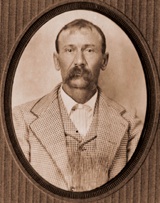
Bill Downing a.k.a. William F. Downing was a notorious outlaw during the Wild West era in Arizona. Downing had fled from the Texas Rangers posse who was after him when he came to Arizona. In Arizona, he was involved in the killing of William S. “Slim” Traynor and in various train robberies including the robbery of the Train Depot in the town of Cochise. Downing was so unpopular that even members of his gang couldn't stand him.

Kidnapping by Indians is a 1899 British silent short Western film, made by the Mitchell and Kenyon film company, shot in Blackburn, England. It is believed to be the first dramatic film in the Western genre, pre-dating Edwin S. Porter's The Great Train Robbery by four years.










![<i>Man of the East</i> 1972 [[Cinema of Italy|Italy]] film](https://upload.wikimedia.org/wikipedia/en/2/2d/Man_of_the_east.jpg)




